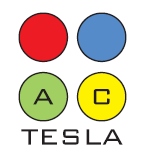CHECKLIST OF TECHNICAL COMPLIANCE OF EV CHARGERS
1. Technical compliance for EV charging system
TR25:2016 specifies mandatory safety technical requirements for EV charging systems. The Technical Reference is to be read together with SS 638 (formerly SS CP 5), Code of Practice for Electrical Installation and the relevant International Electrotechnical Commission (IEC) standards as stated below. The intention is to protect persons and properties against electrical hazards.
In line with TR25:2016, you should engage local or overseas laboratories that are accredited by the Singapore Accreditation Council (SAC). Mutual Recognition Arrangement (MRA) partners from the International Laboratory Accreditation Cooperation (ILAC) may also perform and certify that the EV charging equipment meets the necessary standards. (Find out more about Singapore Standards and Technical References.)
Your EV supply equipment (EVSE) are to be tested according to the following standards:
A. AC charger: Type 2 AC System (Wall-mounted or floor standing)
a. TR25:2016 and the relevant normative IEC standards referred to in the technical reference; or
b. The following IEC standards (inclusive of the essential tests mentioned in para 2 below):
i. IEC 61851‐1;
ii. IEC 61851‐21‐2;
iii. IEC 62196‐1;
iv. IEC 62196‐2.
B. Portable charger: Type 2 AC portable Mode 2 charger or "IC-CPD"
a. IEC 62752; (only Case B1 complying with TR25:2016 Mode 2 charging Clause 1.6.2.2 is allowed)
C. DC charger: Combo-2 and CHAdeMO DC System (Off-board charger)
a. TR25:2016 and the relevant normative IEC standards referred to in the Technical Reference; or
b. The following IEC standards (inclusive of the essential tests mentioned in para 3 below):
i. IEC 61851‐1;
ii. IEC 61851‐21‐2;
iii. IEC 61851‐23;
iv. IEC 62196‐1;
v. IEC 62196‐3.
2. The following essential tests for an AC charger are required to be carried out by the accredited test laboratory (refer to TR25:2016 for the clauses in brackets):
a. Harmonics and DC current injection (Clause 1.7.10)
b. Interlocks (Clause 1.9.7.1)
c. Clearance and creepage distances (Clause 1.11.3)
d. Solar radiation (Clause 1.11.8.7)
e. Saline mist (Clause 1.11.8.8)
f. Vibration test (Clause 1.11.11.2)
g. Shock test (Clause 1.11.11.3)
h. Emergency switching (Clause 1.12.6)
3. The following essential tests for a DC charger are required to be carried out by the accredited test laboratory (refer to TR25:2016 for the clauses in brackets):
a. Solar radiation (Clause 2.11.8.5)
b. Saline mist (Clause 2.11.8.6)
c. Environmental conditions (Clause 2.11.10)
d. Emission (Clause 2.11.12.1)
4. All test reports issued must bear the accreditation body's mark, accreditation certificate number and be traceable to the model and make of the EV charger. The reports must be accompanied by a certificate of conformity. This has to be issued by a local or overseas laboratory accredited by SAC or its MRA partners from ILAC. Learn more about the accreditation schemes.
